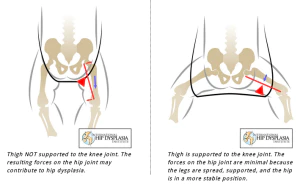Tight Muscles & Tissue mobilisation

“My hamstrings are tight” or “I can’t sit cross legged as my hips are tight” are two statements we often hear in our clinic. Many people are aware of limitations in their flexibility. Mobility classes and yoga are becoming more and more popular in the sporting population as an adjunct to their regular sport in an attempt to optimise flexibility and performance. Some people go for regular massages to try and resolve their tightness whereas others prefer to go to a Physiotherapist for tissue mobilisation. But what’s the difference? Why go to a physiotherapist when I can get a cheaper massage elsewhere?
Whether you go for a standard massage or seek the advice of Physiotherapist; soft tissue mobilisation techniques aim to break up inelastic or fibrous muscle tissue or adhesions (such as scar tissue), mobilise tissue fluids and reduce muscle tension by using a series of kneading or rubbing techniques with the hands.
Where a Physiotherapist differs from a standard massage is in their assessment prior to treatment and in the structures they can work on in order to restore equilibrium. Recent evidence has suggested that massage alone does not elicit long term relief from certain musculoskeletal conditions such as low back pain (Furlan et al.2015). This is where Physiotherapy may be more relevant. Combining our knowledge of anatomy and physiology with a thorough subjective and objective assessment we aim to identify any other issues that may be limiting your flexibility. We will look at joint range of motion, neural tension, muscle length and strength and palpate the area to identify any specific areas of tightness in order to establish a clear picture of how your body is functioning and why you may have mobility or functional issues.
Tissue mobilisation techniques can then be implemented to best suit your case. Such as:
soft tissue mobilisation (massage, deep frictions, trigger point release)
neural glides
joint mobilisations (Maitland, Mulligan method)
joint capsule stretching
Physiotherapist lead treatments tend to be more active eg. The patient will be asked to activate certain muscles during the treatment (a technique that has been found to be more beneficial then static treatments (Hopper et al., 2005). Whereas a standard massage usually involves a more passive approach where the patient lies still for the duration of the session. An assessment by a Physiotherapist is always recommended to help identify any problem areas and sometimes regular massages can be beneficial in reducing DOMS (delayed onset muscle soreness) and promote recovery, but more often than not there is more to your “tight hamstrings” than you think.
Furlan, A.D., Giraldo, M., Baskwill, A., Irvin, E., Imamura, M. (2015) Massage for low back pain. Cochrane Database Systematic Review. Sep 1:9.
Hopper, D., Deacon, S., Das, S., Jain, A., Riddell, D., Hall, T. and Briffa, K. (2005) Dynamic soft tissue mobilisation increases hamstring flexibility in healthy male subjects. British Journal of Sports Medicine. 39: 594-598





